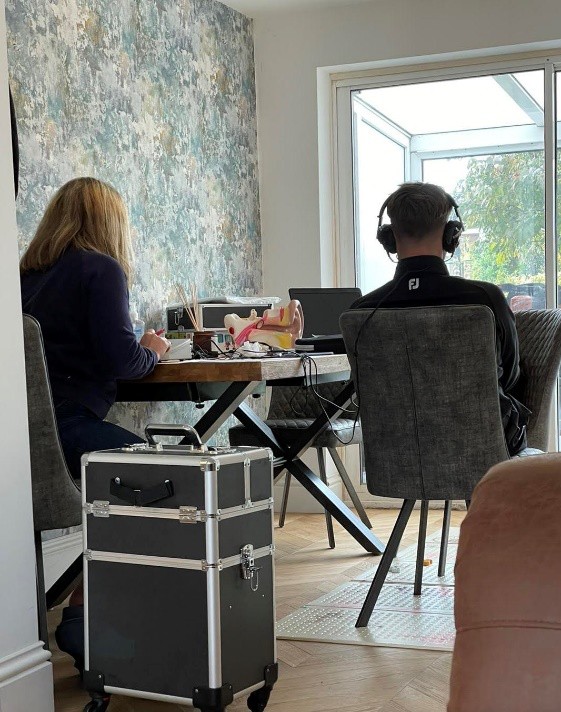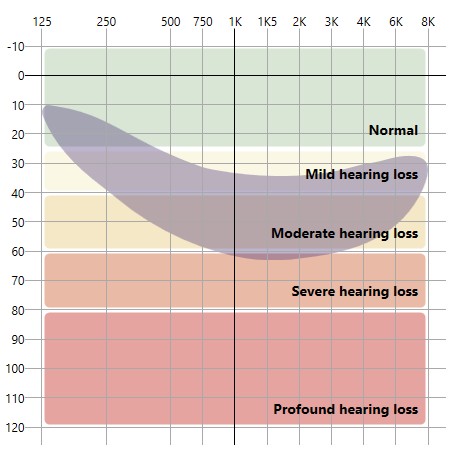Hearing Testing & Advice
Prior to hearing assessment the Audiologist will ask you some questions relating to your health and hearing difficulties. They will also perform ear examination to check the health of your ears and the status of any wax/debris. If the ear canals are clear of any wax/debris, the Audiologist will proceed with Audiometry as per British Society of Audiology Recommended Procedures (www.thebsa.org.uk)
The Audiologist will then perform Audiometry to assess your hearing threshold levels. They will explain the hearing test, placing the headphones on and get you to face away from the test equipment to remove any visual distractions holding a response button to press when you hear a sound. Bone conduction and masking noise might also be used to complete a full picture of your hearing levels.

After testing, the Audiologist will explain the test results and make some recommendations for referrals onwards or hearing aids and additional listening devices that might be required. A written summary will be given of the results alongside a verbal explanation using the model ear as visual illustration to explain the anatomy of the outer, middle and inner ear.
Degrees of hearing loss
The hearing test will be visually recorded on an Audiogram to illustrate your hearing threshold levels in terms of frequency and intensity. Hearing thresholds measured for the right ear are plotted as circles and for the left ear plotted as crosses. The range of hearing is as follows:
Normal hearing: you can hear quiet sounds between -10-20dB HL – although it is possible to have difficulty hearing in this range
Mild hearing loss: hearing loss between 20-40dB HL – difficulty following speech in noise
Moderate hearing loss: hearing loss between 41-70dB HL – difficulty following speech even in quiet
Severe hearing loss: hearing loss between 71-90dB HL – difficulty following speech without a hearing aid
Profound hearing loss: hearing loss over 90dB HL – you may need hearing aids, cochlear implants, additional communication needs including lipreading, assistive listening devices for the TV, phone, doorbell and sign language.

Types of hearing loss
Conductive Hearing Loss – hearing loss caused by something that stops sounds from getting through the outer or middle ear. It can be caused by wax or foreign bodies in the ear canal, middle ear fluid or a perforation of the eardrum. This type of hearing loss can often be treated with medicine or surgery.
Sensorineural Hearing Loss – hearing loss that occurs when there is a problem in the way the inner ear or hearing nerve works. This includes hearing loss due to age, noise exposure, side effects to ototoxic drugs and tumours of the auditory nerve. This type of hearing loss is permanent in nature.
Mixed Hearing Loss – hearing loss that includes both a conductive and a sensorineural hearing loss.
Auditory Neuropathy Spectrum Disorder – hearing loss that occurs when sound enters the ear normally, but because of damage to the inner ear or the hearing nerve, sound isn’t organised in a way that the brain can understand.
Copyright © 2021
Poynton Ear Care
All rights reserved.
